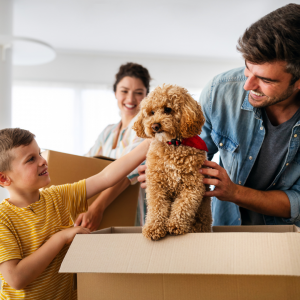
As cooler weather approaches, many Edmonton pet owners find themselves dealing with an uptick in loose fur. Whether it’s clinging to your clothes or piling up in corners, seasonal shedding can catch you off guard. But don’t worry—pet shedding in Edmonton is a normal, natural response to changing light and temperature.
Understanding why your pet sheds more during this time, which breeds are most affected, and how to manage it effectively can help you stay on top of the fur and keep your home tidy.

Why Shedding Increases in Cooler Months
The primary trigger for seasonal shedding isn’t the temperature—it’s the daylight. As the days grow shorter, your pet’s internal clock signals that it’s time to shed their lightweight summer coat and begin growing in a thicker winter one.
This cycle is especially strong in northern cities like Edmonton, where the shift in daylight hours is more dramatic. Even indoor pets are affected by these changes, as they’re still exposed to natural light through windows or daily routines.
So while fall might not feel like “shedding season,” this transition is just as important for your pet as the springtime coat change.

Breeds Most Affected by Coat Changes
While all pets shed to some degree, some are more prone to seasonal blowouts. Double-coated dogs—such as Golden Retrievers, German Shepherds, Huskies, and Malamutes—are known for intense coat changes in the fall. These breeds shed their soft undercoat to prepare for the dense winter fur that helps them stay warm.
Long-haired cats and mixed breeds with thick coats may also experience heavier shedding during this time. If your pet was bred for colder climates, you’re likely to notice more hair around the house as the season shifts.

Grooming Tips to Reduce Shedding at Home
Managing pet shedding in Edmonton starts with good grooming habits. Here’s how to stay ahead of it:
- Brush often: Regular brushing (2–3 times per week or daily for heavy shedders) helps remove loose hair and prevent matting. Use de-shedding tools like undercoat rakes or slicker brushes.
- Give warm baths: A warm bath loosens dead hair and helps reduce shedding when followed by a good brushing session. Consider a de-shedding shampoo for best results.
- Visit a groomer: Local Edmonton groomers often offer seasonal de-shedding services that remove loose undercoat efficiently. Booking early ensures availability before the winter rush.
- Clean smart: Use vacuum attachments for pet hair, washable furniture covers, and lint rollers to keep your home fur-free.

When to See a Vet
Shedding is normal, but certain signs mean it’s time to call your veterinarian. Watch for:
- Bald spots or uneven patches
- Excessive scratching, licking, or biting
- Dry, flaky, or inflamed skin
- Sudden changes in shedding patterns
These may point to allergies, parasites, infections, or other health issues. A vet can rule out underlying problems and recommend the right treatment to keep your pet comfortable and healthy.

Stay Ahead of Shedding Season
Pet shedding in Edmonton during the cooler months is a natural part of your pet’s health cycle. With a few smart grooming habits and some preventative care, you can keep both your pet and your home more comfortable during this seasonal transition.
And if this fall has you thinking about more than just fur—like finding a home with the perfect layout for pets and family life—the Dave Ozubko Real Estate Team is here to guide you. From homes with mudrooms that make grooming easier to spaces that give every family member (paws included) room to thrive, we’ll help you find the right fit for your next chapter in Edmonton.


















































